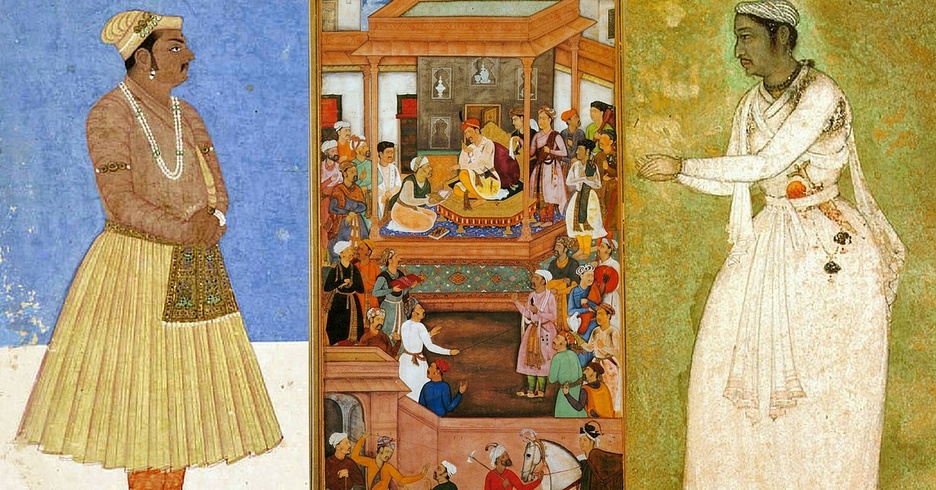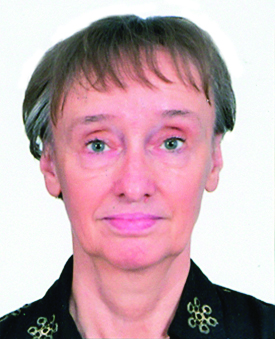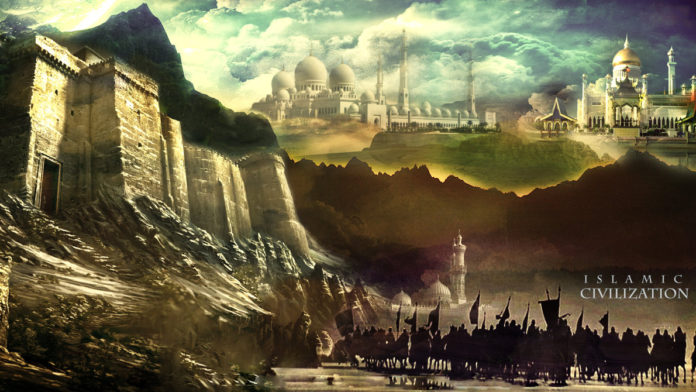Islam is the second largest religion with about 600 million Muslims, forming about one third of South Asia’s population. South Asia has the largest population of Muslims in the world, with about one-third of all Muslims being from South Asia. Islam is the dominant religion in half of the South Asian countries (Afghanistan, Bangladesh, Maldives and Pakistan). In India, Islam is the second-largest religion while in Sri Lanka and Nepal it is the third-largest religion.
Islam existed in South Asian communities well before Muhammad bin Qasim’s advent along the Arab coastal trade routes in Sindh, Gujarat, Malabar, and Ceylon. As soon as Islam was revealed and had gained early acceptance in the Arabian Peninsula Arab traders brought it to the subcontinent. The Barwada Mosque in Ghogha, Gujarat built before 623 AD, Cheraman Juma Mosque (629 AD) in Methala, Kerala and Palaiya Jumma Palli (630 AD in Kilakarai, Tamil Nadu are three of the first mosques in South Asia which were built by seafaring Arab merchants. The first incursion through sea occurred during Caliph Umar’s time when the governor of Bahrain, Usman ibn Abu al-Aas, sent his brother Hakam ibn Abu al-Aas to raid and reconnoitre the Makran region around 636 AD long before any Arab army reached the frontier of India by land. Al-Hakim ibn Jabalah al-Abdi, who attacked Makran in the year 649 AD, was an early partisan of Ali ibn Abu Talib. During the caliphate of Ali, many Hindu Jats of Sindh had come under the influence of early Shi’ism and some even participated in the Battle of Camel and died fighting for Ali.
Under the Umayyads (661–750 AD), many Shias sought asylum in the region of Sindh, to live in relative peace in the remote area. After the Arab conquest of Persia was complete, the Muslim Arabs then began to move towards the lands east of Persia and in 652 captured Herat. In 712 CE, a young Arab general Muhammad bin Qasim conquered most of the Indus region for the Umayyad empire, to be made the “As-Sindh” province with its capital at Al-Mansurah. By the end of the 10th century, the region was ruled by several Hindu Shahi kings who would be subdued by the Ghaznavids. Islam arrived in North India in the 12th century via the invasions of Ghurids conquest and has since influenced India’s religious and cultural heritage.
The Delhi Sultanate and the Mughal Empire have ruled most of South Asia and the Bengal Sultanate, the Deccan sultanates and the Sur Empire have played major economic and political roles. The largest dilation of Muslim rule in the subcontinent was marked under reign of emperor Aurangzeb. Muslim power quickly vaporized in the 18th century and was replaced with successor Rajputs, the Marathas, Sikhs in Punjab, the Jats and smaller Muslim states before the British East India Company put an end to Muslim rule. Islamic scholars reacted slowly to the British rule. The British authorities’ westernisation policies effectively destroyed the exclusive hold of the ulama over education and curtailed their administrative influence.
There are many misunderstandings of how Islam spread in the subcontinent, violence being one. That myth was created by western orientalists that tried to explain away the number of conversions to Islam despite it allegedly being an inferior religion. Historical documents show that that was not true. The Arab conquerors did not have an interest in converting the local populations. In Sindh local Hindus and Buddhists were accorded dhimmi status and left alone. Although a few select temples were destroyed initially, religious life continued as it had done before. Over the centuries, many Sindhis became Muslim due to the influence of Sufis. Apart from Hindus the local population in the 8th c. also comprised Jains, Buddhists and followers of various cults many of whom accepted Islam. Few local Brahmins converted choosing to incorporate themselves into the Muslim ruling class. Northern India was conquered by Afghans starting from the 11th c. Mahmud who ruled the sultanate of Ghazna expanded his rule into Punjab, transforming Lahore into both a border cantonment and vital center for Islamic scholarship. Mahmud’s court was both urbane and sophisticated. He promoted works on poetry, science and Sufism. The first Persian Sufi text in South Asia, Kashf al-Mahjub, was composed in Ghaznavid Lahore by Shaykh Abul Hasan ‘Ali Hujwiri, whose shrine is one of the most important in South Asia. His work was to become a crucial source for early Sufi philosophy. Sufi groups entered the Sultanate as Sunni missionaries while in Sindh the Fatimid presence of Shias was felt. In any case, by the end of Muslim rule in mid-19th c. Muslims consisted only about 20% of the population in the subcontinent, and that after 700 years of Muslim rule. If conversion would have been a goal, the success of the Muslim rulers would have been quite limited.

The Delhi Sultanate (1206–1526) and the Moghul Empire (1526-1857) are often described as “Islamic” but giving it a closer look reveals that most of the Muslim rulers did not have an Islamization agenda. The attempts of Akbar to create ”Din-I Ilahi” a mix of religions present in the subcontinent was what one could rather call and “anti-Islamization agenda”; and while Emperor Aurangzeb -noted for his religious piety and stringently observed the rituals of Islam he did nothing to change the way common Indian Muslims practised their religion. His effort to codify Hanafi law by the work of several hundred jurists, called Fatawa-e-Alamgiri also remained without immediate influence on popular Islam and modern historians have also shown that his alleged anti-Hindu agenda does not concur with facts: Aurangzeb’s imperial bureaucracy employed significantly more Hindus than that of his predecessors and historians today question the historical authenticity of the claims of his critics, arguing that his destruction of temples has been exaggerated and noting that he built more temples than he destroyed.
This brings us to another feature of Islam in South Asia. While in much of the Muslim world like among Arabs, in Iran, Turkey and Central and parts of Southeast Asia Muslims are a majority, in the subcontinent they have been and are until today a minority faced by a strong social system consisting of castes. The idea of caste and to be born into a caste that fixes one’s place in the social hierarchy has influenced the Islamic civilization that has developed and taken hold in South Asia. The presence of a Hindu majority society over the centuries has more than in other regions of the Muslim world influenced the living Islam and its cultural appearance with remnants of the surrounding non-Muslim society. Notions of caste have been incorporated eroding the principle of equality of men in Islam (Ashraf and Ajlaf). Hindu customs of lavish marriages, superstitions and other ancestral believes and customs from Hinduism were brought into Islamic practice by the converts. Thus, the Islamic civilization of South Asia bears the imprint of the surrounding non-Muslim society and its culture to a larger extent than it is present in the process of indigenization of Islam in other regions.
Contributed by:

former Professor of South Asian Studies, Humboldt University, Berlin, Editor of the Defence Journal and a Consultant to the Pathfinder Group).





